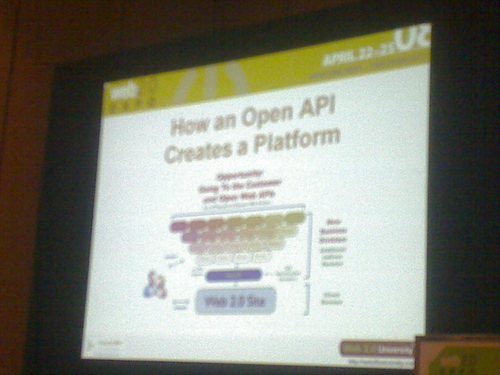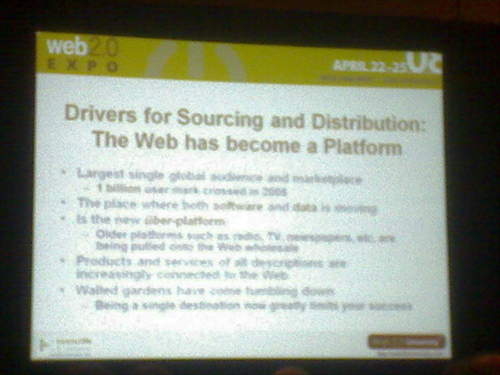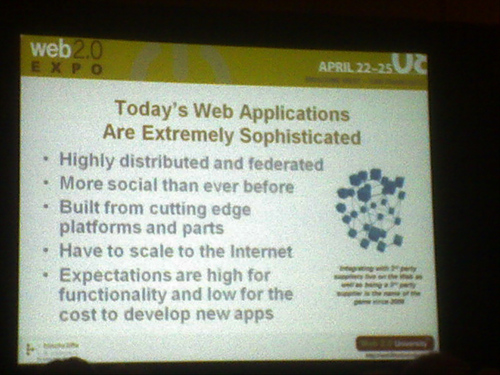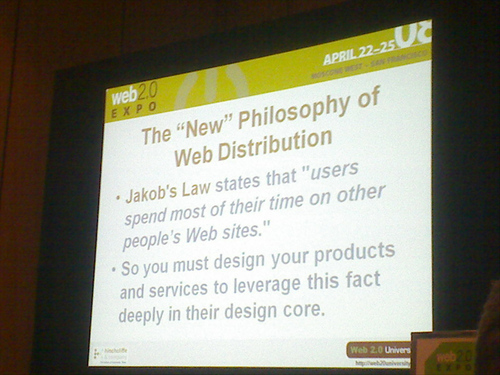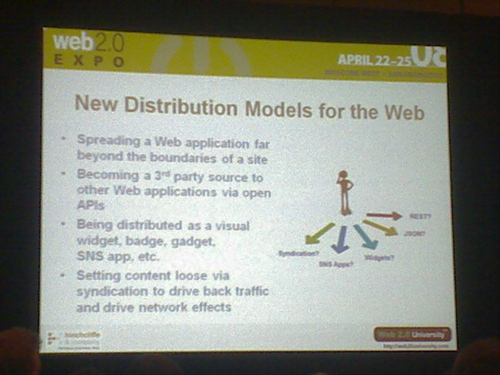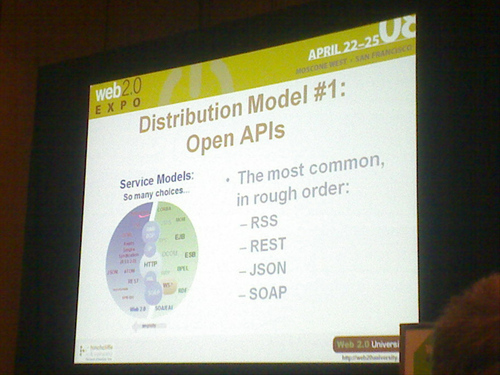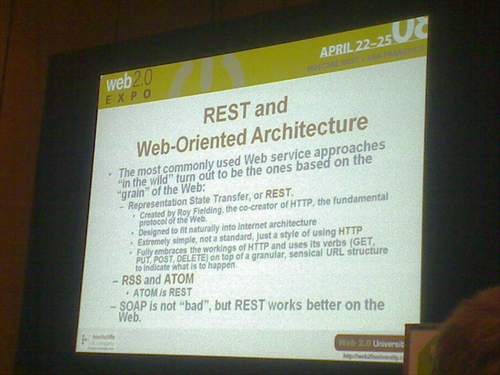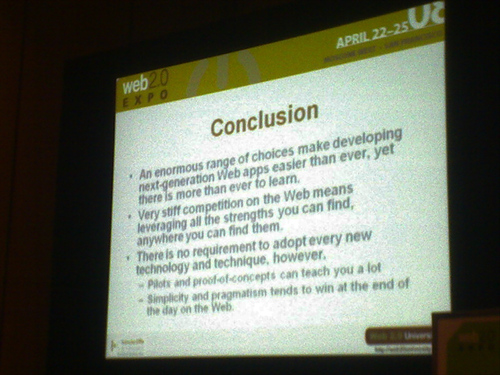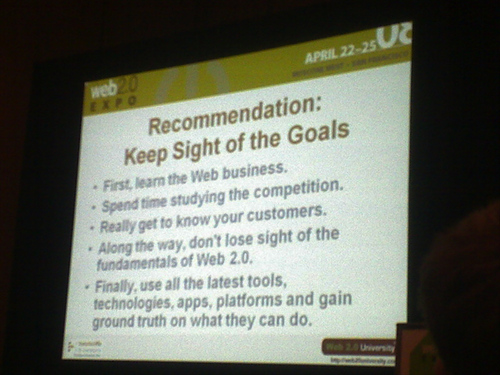What do you want NASA2.0 to be?
Posted on Wednesday, April 23, 2008
I am here in San Francisco at the Web2.0 Expo in Moscone West, just kicking off with the highly informative 'Building Next Generation Web2.0 Applications' workshop by Dion Hinchcliffe (See some of his slides below).
One of the points he made very clear is the value of data. Data is the new Intel inside as Tim O'Reilly so succinctly proclaimed in his seminal 2005 paper on 'What is web2.0'. The web is a platform. For NASA, its a platform for space exploration. Getting web2.0-ified seems not so much a question of how to gather a data class valuable to its users (after all, who doesn't like images like these, or looking through the eyes of our rovers on Mars, as seen from above), or getting everybody to become rocket scientists (although...mmm...;-), but more the other way around: how to leverage its vast data resources (after all, what are satellites other than data gathering devices) to get the public more engaged in NASA's mission and activities. Space is cool, and you know it. Its just too far away from our daily lives on the web. Give me space exploration, right here, right now, and we'll give you our database of space exploration intentions.
Building an open platform on the web where NASA can easily share all the great data it gathers is the anwser. Be there as the images pour in. Be there as the exploration takes place. NASA2.0 is all about getting NASA's data more available, usable and shareble on the web. Where possible in (near) real time please.
Which reminds me of this post over at the Institute Of The Future about post-scientific society. Well worth the read!
American innovators — with their world-class strengths in product design, marketing and finance — may have a historic opportunity to convert the scientific know-how from abroad into market gains and profits. Mr. Hill views the transition to “the postscientific society” as an unrecognized bonus for American creators of new products and services.And they just released today a new initiative called X2 about the future of science and technology.
A post-scientific society will have several key characteristics, the most important of which is that innovation leading to wealth generation and productivity growth will be based principally not on world leadership in fundamental research in the natural sciences and engineering, but on world-leading mastery of the creative powers of, and the basic sciences of, individual human beings, their societies, and their cultures.
Just as the post-industrial society continues to require the products of agriculture and manufacturing for its effective functioning, so too will the post-scientific society continue to require the results of advanced scientific and engineering research. Nevertheless, the leading edge of innovation in the post-scientific society, whether for business, industrial, consumer, or public purposes, will move from the workshop, the laboratory, and the office to the studio, the think tank, the atelier, and cyberspace.
